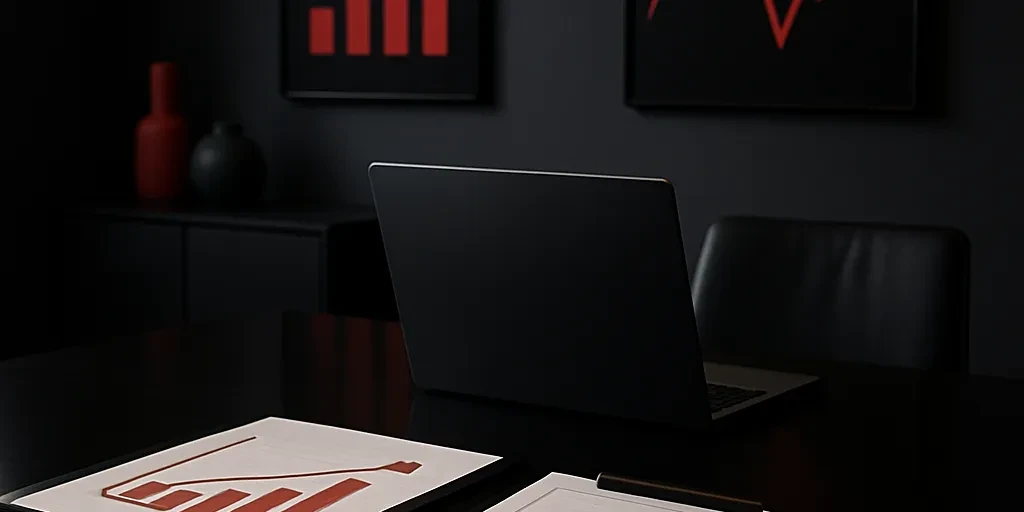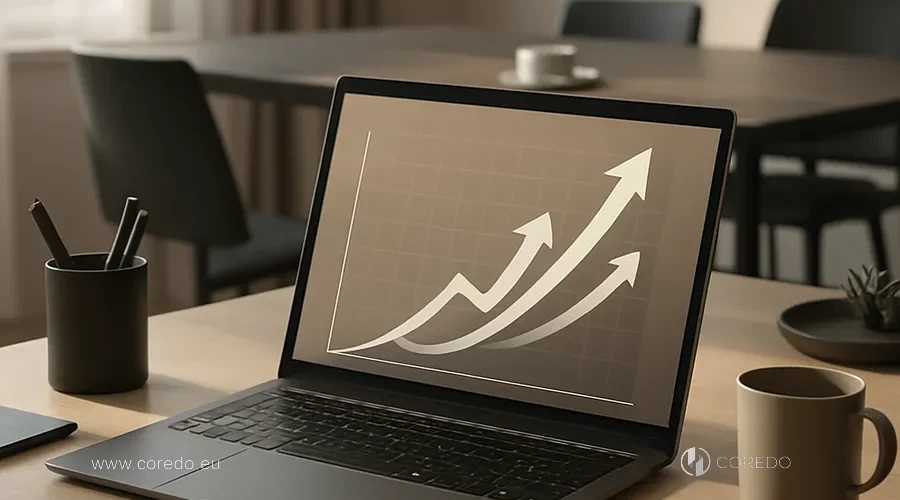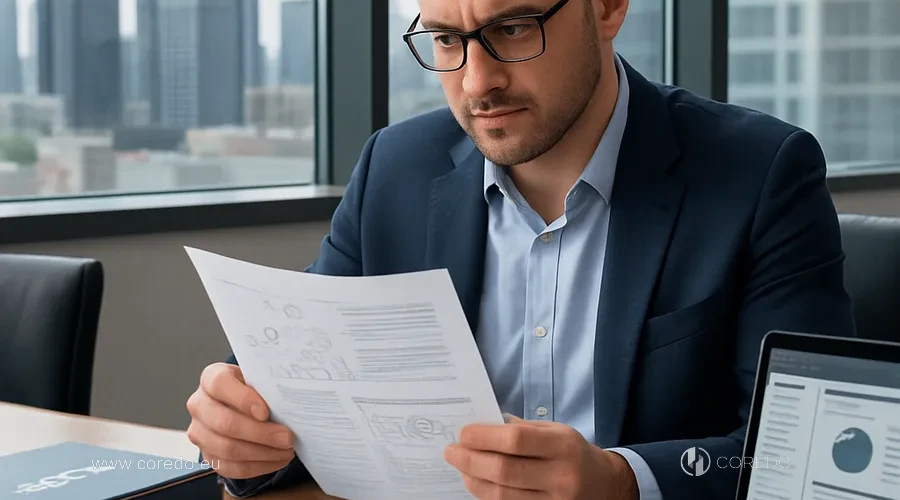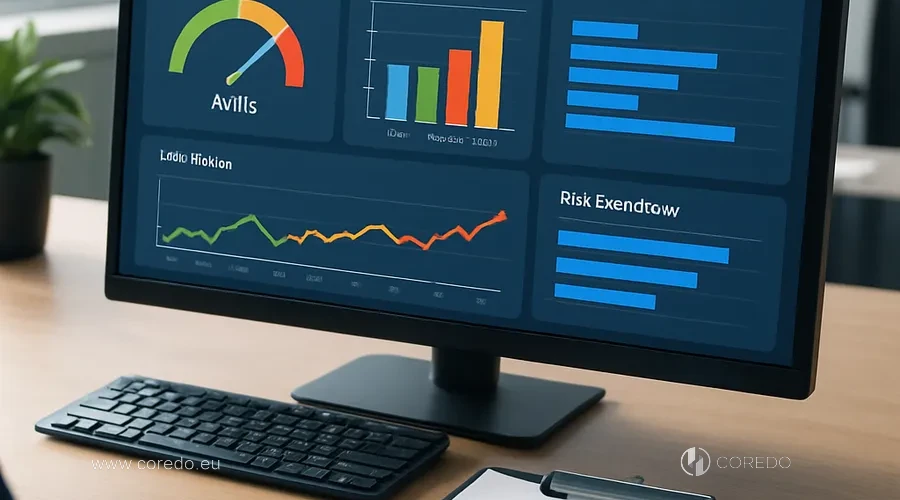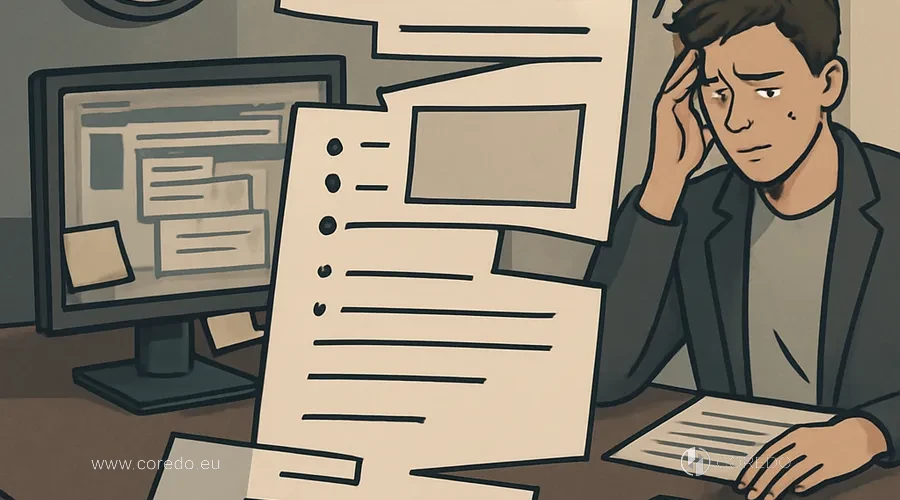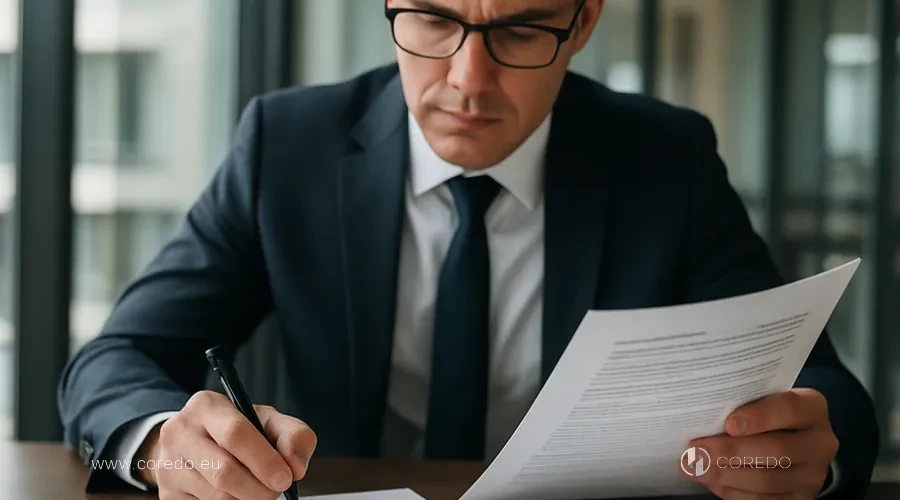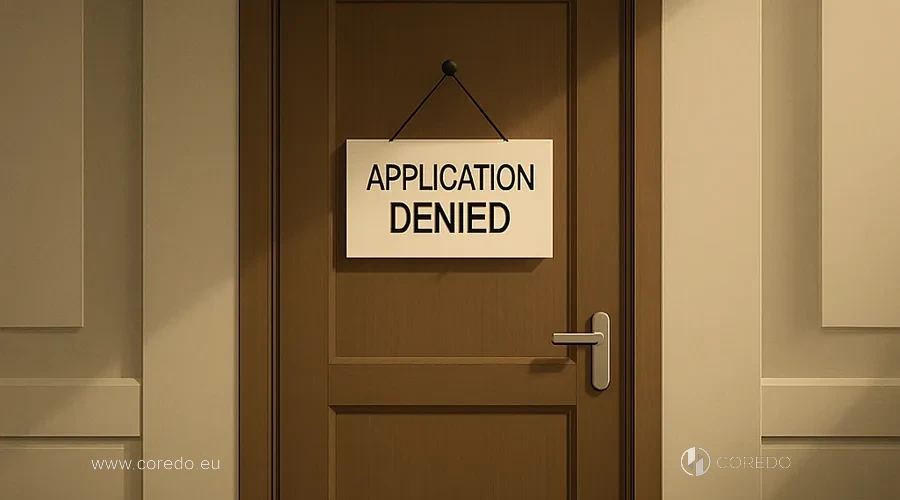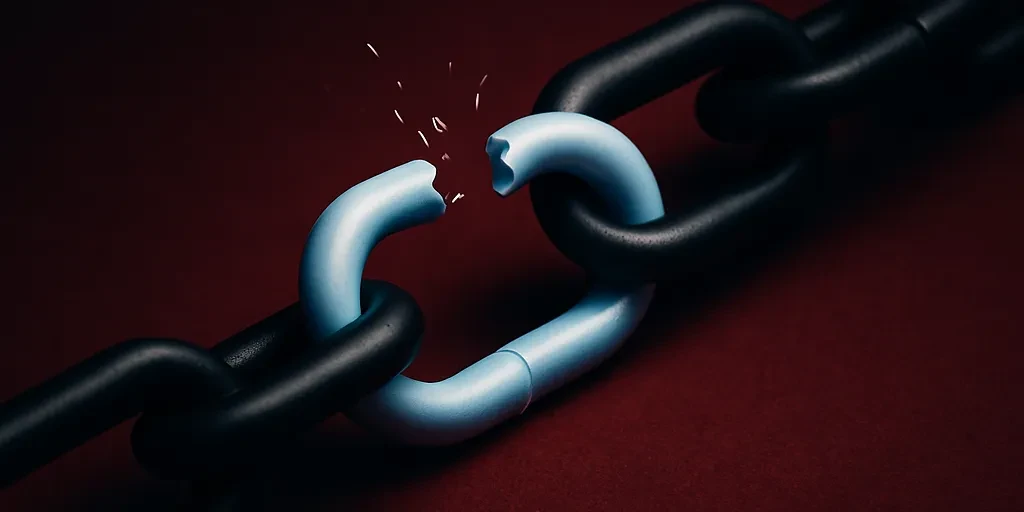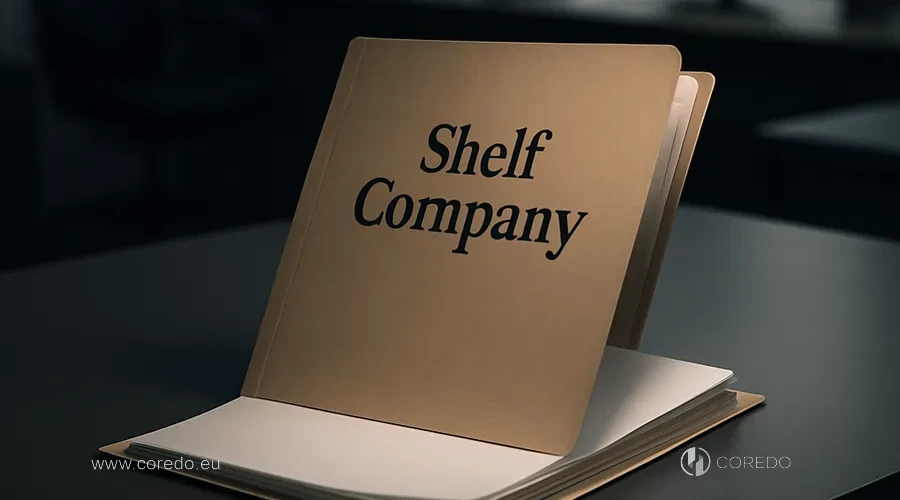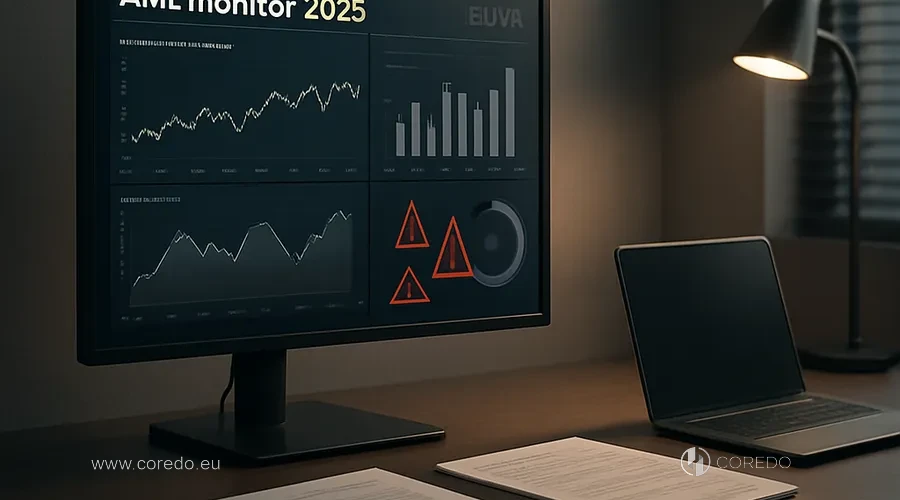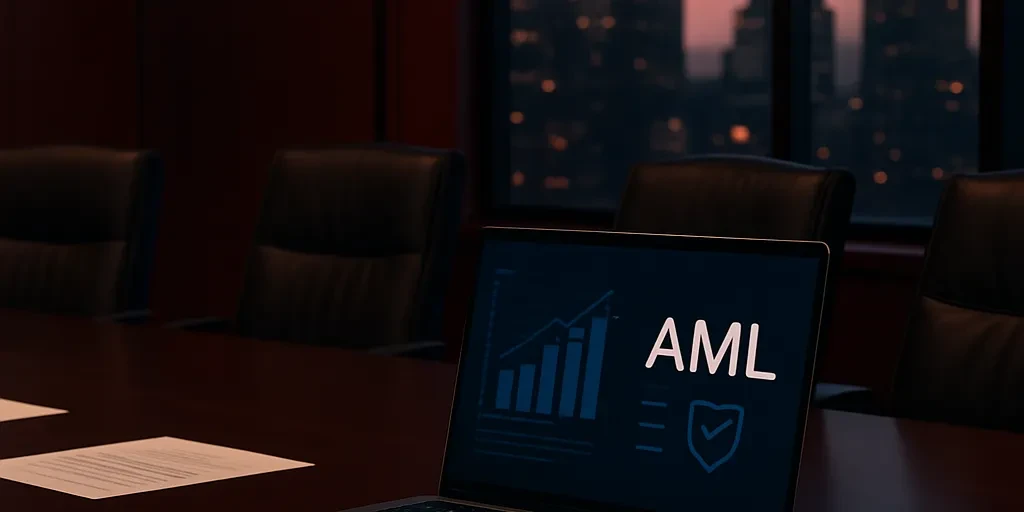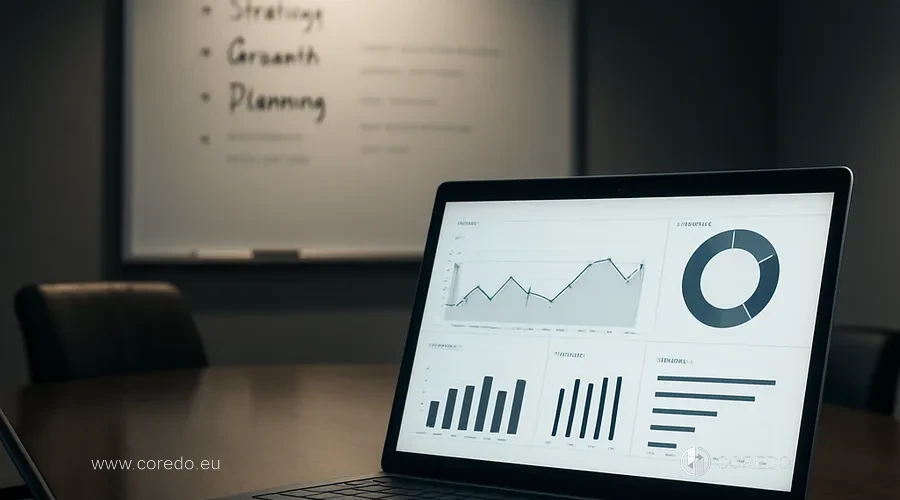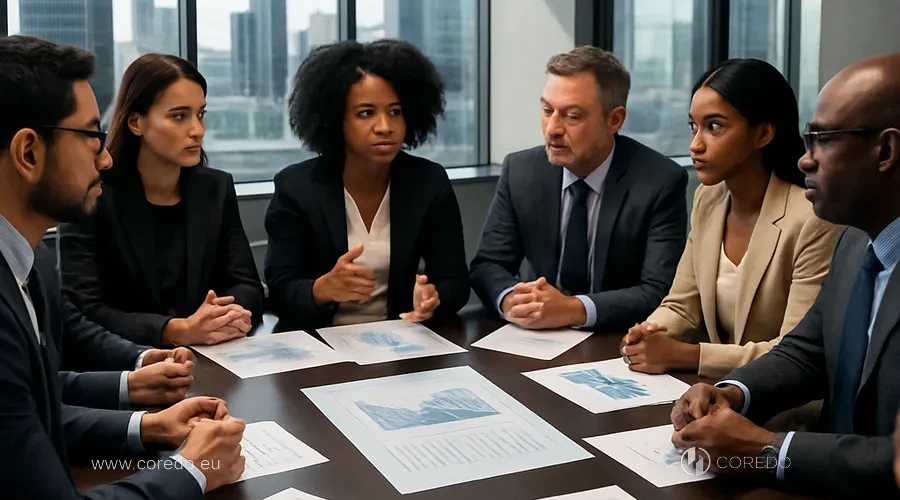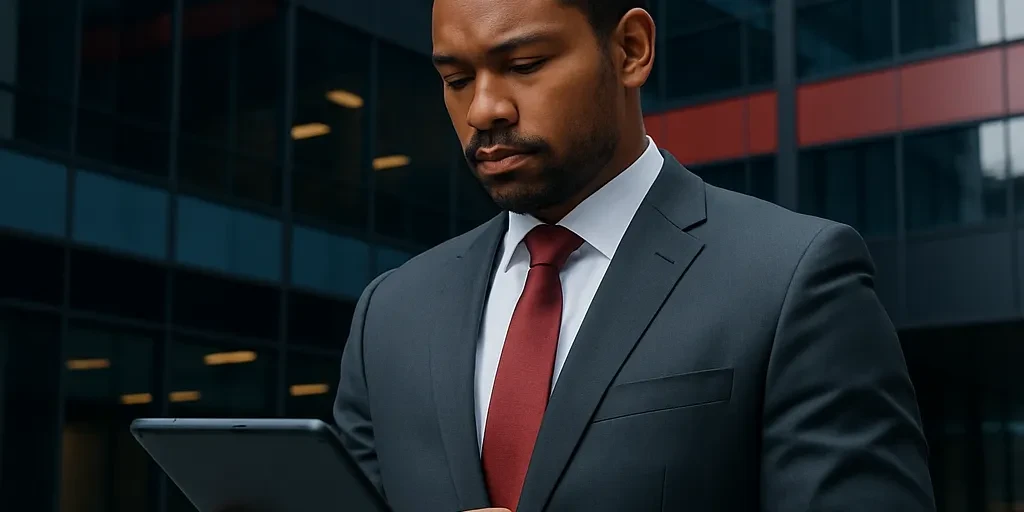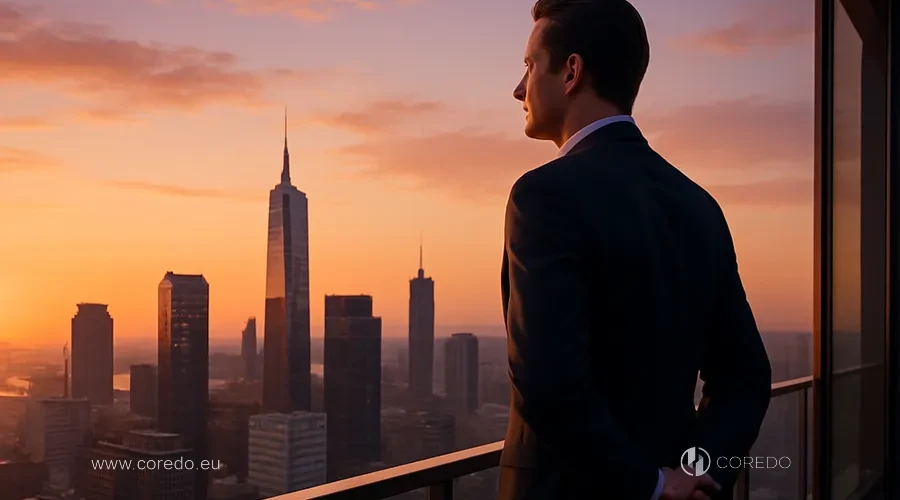Over recent years in the EU, the share of inspections triggered not “as scheduled” but by risk signals has exceeded planned inspections in sensitive sectors – finance, logistics, IT services and B2B services. For business this means one simple thing: unplanned inspections have become the result not of chance, but of specific risk indicators that EU regulators record via digital monitoring systems, banks and third‑party complaints.
A single serious inspection today often results not only in fines, but also in the blocking of operations by regulators, account freezes, loss of a key bank and long-term reputational damage. For international structures with assets in the EU this directly affects business valuation and access to capital: investors read public supervisory reports, the media quickly pick up the cases, and partners initiate their own checks of EU companies.
I often hear the same question from owners and CFOs: “If we are not breaking the law, why should we worry about red flags for EU regulators?” The answer is that supervision in Europe long ago stopped focusing only on proven violations: it operates as risk-oriented supervision, responding to the aggregate of signals, the digital public assessment of compliance and the business’s behavioral model.
In this article I propose to look at the topic pragmatically:
- which red flags in the EU actually trigger inspections;
- how to set up a system to minimize the risk of unplanned business inspections;
- how to apply the same approach to your own counterparties and negotiations.
If you manage a group of companies in the EU, Asia or the CIS, are planning licensing or already operate under financial supervision, I recommend reading the material to the end: this is not theory, but a concentrate of practices that the team
COREDO has been implementing for clients in the EU, Singapore, the United Kingdom and Dubai for many years.
Red flags for EU regulators — what they are

What “red flags” are for EU regulators: they are not formal terminology, but a practical tool that helps identify transactions and counterparties of increased risk within sanctions and compliance control. Understanding their definition and classification is important for building a risk‑oriented approach: from initial screening to in‑depth analysis of operations and subsequent actions by regulators.
Red flags in the risk-based approach of regulators
By EU red flags I mean specific behavioral and digital markers that increase a company’s “risk rating” in automated surveillance systems. Regulators use them as risk indicators to decide where to launch an in‑depth inspection and where to limit themselves to remote monitoring.
The modern risk‑based approach is built on a combination of:
- data from tax and corporate registries;
- information from banks (KYC/AML signals);
- signals from other authorities;
- complaints and whistleblower reports.
All of this is processed by automated risk monitoring systems: algorithms search for patterns, anomalies and digital risk signals — from UBO mismatches to strange payment chains. For businesses it is important to understand: a red flag by itself is not a verdict, but it increases the likelihood of a high‑level review of the company, and when accumulated — triggers a full inspection.
Classification of red flags
Based on years of practice at COREDO, we conventionally divide red flags into five groups:
- Sanctions red flags
- atypical jurisdictions in the supply chain;
- indicators of sanctions evasion through intermediaries and “sanctions grey zones”;
- indirect links to sanctioned individuals or companies listed on sanctions lists.
- Financial red flags
- persistent discrepancies in reporting between tax and corporate data;
- transactional anomalies: sudden spikes in turnover, repeated payment reversals, signals from banks;
- investigations, freezes of accounts and other assets in multiple jurisdictions.
- Corporate red flags
- shared addresses, shared directors;
- complex and opaque ownership structures without an obvious business purpose;
- use of shell companies and one‑day counterparties in key links of the group’s scheme.
- Operational red flags
- systemic complaints from employees and clients;
- conflicts with inspectors: refusal of access to inspectors, evasion of routine visits;
- serious security incidents and data breaches.
- Reputational red flags
- protracted disputes with regulators;
- negative media coverage and court rulings;
- persistently negative reputation based on business reputation analysis and media monitoring.
These groups combine: the same company can simultaneously give sanctions‑related, corporate and operational signals, which moves it into the category of extremely high risk.
Main red flags of business inspections in the EU

What triggers unplanned business inspections in the EU: the main red flags are often not related to large-scale violations, but to seemingly isolated external signals. Complaints from customers, partners, employees and other third parties often become the trigger that launches an unplanned inspection and a detailed review of the company.
Complaints and signals from third parties
In the EU, complaints as a trigger for inspections work much more effectively than many assume. Regulators consider:
- individual appeals from employees, customers, partners;
- complaints from competitors supported by documents;
- reports from whistleblowers through protected channels.
When the number of complaints on a single topic exceeds a certain threshold, the regulator forms a public risk assessment of the company and may initiate unplanned EU business inspections with on-site visits or remote audits. Our experience at COREDO shows: a competent internal complaint handling procedure and preventive communication with regulators often stop the inspection at this stage.
Anomalies in registers and registries
The second common trigger: anomalies in registries. Algorithms check:
- matches by UBO and ultimate beneficiaries;
- repeated shared addresses and recurring directors;
- a sharp change in ownership structure without plausible business reasons.
If the system detects that dozens of companies are registered at one address in a single jurisdiction and a beneficiary appears in several sensitive sectors, this increases the risk. At COREDO we always start Red Flag
Due Diligence with such a check, for the client and for its key partners.
Discrepancies in financial reporting
Any persistent discrepancies in reporting are a powerful signal. In focus:
- mismatch between revenue, the tax base and corporate reporting data;
- cash gaps and atypical transactional anomalies;
- recurrent bank inquiries and freezes of accounts/assets.
When such indicators are combined with a “thin” staff, lack of office infrastructure or unconvincing explanations, the company easily ends up selected for an in-depth inspection and detailed compliance checks with tax regulation.
Connections with sanctioned persons and sanctions evasion
Any sanctions-related red flags are now under the microscope. It’s not only about direct mentions in sanctions lists, but also about indirect signs:
- use of traders from jurisdictions known as sanctions grey zones;
- complex supply chains with affiliated counterparties;
- changing the description of a good or service to evade sanctions.
As part of red flag due diligence for the EU, at COREDO we always check indicators of sanctions evasion, including through comprehensive chain analytics and cross-checking with open and commercial sanctions databases.
Shell companies and corporate groups
A third common source of suspicion is corporate structure. Risks arise when:
- the scheme involves one-day counterparties with no staff or infrastructure;
- the group structure is opaque and not explained by business logic;
- several ownership layers through low-tax jurisdictions are used for operations in the EU.
Such an ownership structure is perceived as an indicator of potential profit extraction, borderline tax optimization and evasion of liability. At COREDO we often rebuild a client’s structure before filing for licenses to remove business red flags at the design stage.
Denial of access and preventive visits
From the regulator’s point of view, denying inspectors access or delaying documents signals a risk of hiding violations. If a company ignores notifications, does not respond to requests or demonstratively avoids a preventive visit, this becomes an independent ground for unplanned inspections with a stricter mandate.
In some EU countries, an on-site inspection in such cases may require separate coordination with the prosecutor’s office, and the subsequent unplanned inspection report will form the basis for further actions – from fines to license suspensions.
Security incidents and data breaches
Major security incidents, compromise of personal data and mass non-payment of salaries are another group of triggers. In focus:
- cyber incidents involving leakage of client data;
- use of illegal migrants in the workforce;
- systematic delay or non-payment of salaries.
For IT and fintech companies, such events instantly affect the risk rating: regulators see a threat to clients’ rights and initiate checks on both IT and HR criteria.
Process of unplanned inspections in the EU
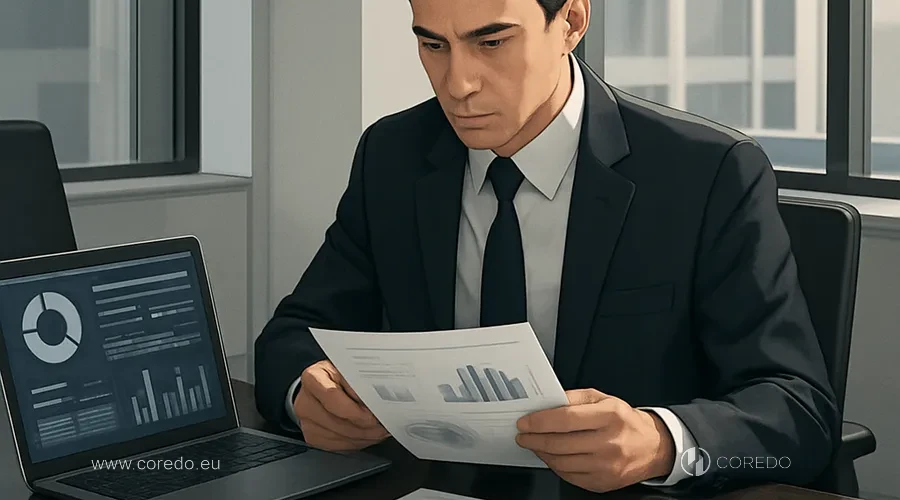
How EU regulators set priorities: the decision-making process for an unplanned inspection is increasingly rarely based solely on complaints or formal grounds and is more often grounded in risk-based supervision. To decide where an unplanned inspection is needed, regulators combine a variety of data sources and use risk assessment algorithms that allow them to quickly identify entities with the highest likelihood of violations.
Data sources and risk-based supervision algorithms
The risk-based supervision model relies on the collection and matching of data:
- company registers and beneficial ownership registers;
- tax data and foreign trade statistics;
- bank signals (AML/KYC), including KYC mismatches;
- results of past inspections and court decisions.
At the first stage a high-level
company screening is carried out: the system evaluates high-risk indicators according to a predefined matrix. If several blocks indicate an extremely high risk, a deep dive is launched: requests, information exchange between agencies, on-site inspections, and sometimes on-site inspections without interaction (observation, collection of external information without entering the office).
At COREDO we design clients’ internal procedures so that critical AML red flags and KYC signals are addressed internally, without reaching the regulator.
Role of the prosecutor’s office in sanctions compliance
Certain types of inspections require coordination with the prosecutor’s office, primarily when there are signs of criminally punishable offenses. International information exchange amplifies the effect: company data may come from other EU countries or partner jurisdictions, as well as through financial intelligence mechanisms.
The growing focus on sanctions compliance means that mention of a company or its UBO in foreign sanctions lists or investigations automatically affects the public assessment of compliance and can become a trigger for an internal inspection in the EU.
Case studies
- Registry anomaly → on-site inspection
In one European jurisdiction a client faced an inquiry regarding repeated changes of director and address. The algorithm detected matches with several companies from a “mass” address pool, the regulator conducted an on-site inspection without interaction, and then initiated an unplanned inspection. After restructuring and documenting the business purpose, the issues were closed, but the bank had to provide additional guarantees.
- Employee complaints → labor and migration inspection
In another situation a series of anonymous reports about excessive overtime and unregistered employees was used by migration services as grounds for an inspection. As a result, the business had to urgently legalize part of its workforce and revise its staffing model to
avoid fines and further tightening of contract terms with a major client who was monitoring the situation.
- Front counterparties → sanctions monitoring and deal rejection
An international investor asked COREDO to carry out a rapid assessment of a partner in Europe. Red flag due diligence revealed that a key supplier was an affiliated company with indirect access to a jurisdiction subject to sanctions. The investor chose to withdraw from the transaction, avoiding a serious compliance conflict and potential operational blockage.
Red Flag Due Diligence: how to conduct step-by-step

Assessing business risk through the Red Flag Due Diligence format helps quickly identify critical risk areas and determine whether to proceed further in negotiations or deepen the review. Below we explain how to build such a review step by step and where to start — with a high-level company review to spot key “red flags” at an early stage.
High-level company review
The first stage is a quick high-level company review (sometimes called Red Flag Due Diligence). At COREDO we use the following basic checklist:
- identification of ultimate beneficial owners and comparison with registers;
- analysis of addresses and directors for signs of mass registrations;
- screening for PEPs and sanction links;
- search for anomalies in public registers and court databases.
Such screening makes it possible in a matter of days to assess the likelihood that your counterparty or your own structure is already highlighted as an object of increased attention.
Counterparty and transaction review
If questions arise at the first stage, a deeper review of the counterparty and transactional activity is initiated:
- payment and logistics chains;
- structure of intercompany settlements within the group;
- screening against international sanctions lists;
- assessment of internal and bank KYC files.
The COREDO team in such projects often combines legal analysis with transactional analytics: we match operations, jurisdictions and counterparties to detect hidden transactional anomalies.
Internal compliance review
It is then useful to conduct an internal compliance audit:
- completeness and accuracy of tax reporting and its compliance with tax regulations;
- validity and verification of SRO licenses and sector-specific permits;
- analysis of HR documents with a focus on the risks of illegal immigrants on the payroll and non-compliance with labor legislation.
Such audits at COREDO are often carried out before applying for
financial licenses or prior to large M&A transactions.
Preventive measures and monitoring
Next, it is important to implement continuous monitoring:
- use of automated risk monitoring systems for UBOs, sanctions and registers;
- regular checklists for key processes;
- implementation and maintenance of a whistleblowing policy;
- training employees to recognize due diligence red flags.
These measures are directly related to loss prevention: they reduce the likelihood of both regulatory sanctions and problems with banks and counterparties.
Action plan upon notification of an unplanned inspection
When a notice or act of an unplanned inspection arrives, the response in the first days determines the subsequent negotiation position. Basic plan:
- Appoint a responsible coordinator and a lawyer/team.
- Promptly collect the requested documents and interaction logs.
- Analyze the legality of the requests and, if necessary, adjust the scope of data provided.
- Plan reputation management: who and how communicates with partners and the media.
COREDO’s practice shows: open but legally sound cooperation reduces the likelihood of escalation and subsequent tightening of measures.
How to minimize the risk of an unplanned inspection

Practical recommendations for minimizing the risk of an unplanned inspection start with basic but critically important elements – policies and processes. Clearly written rules, transparent regulations and procedures understandable to employees help not only to build a controlled environment but also to significantly reduce the likelihood of triggers for an unplanned inspection by supervisory authorities.
Policies and processes: where to start
When it comes to priorities, zone No.1 always includes:
- KYC‑procedures for counterparties;
- sanctions compliance;
- AML‑policies and management of due diligence red flags;
- a formalized risk-oriented approach to internal control.
Solutions developed at COREDO often include standard policies and risk matrices adapted to specific industries and jurisdictions.
Corporate Document Toolkit
The second line of defense — a set of documents that proves your good faith. Minimum set:
- documents on ultimate beneficiaries and group structure;
- agreements with key partners and contract documentation for disputed transactions;
- payment confirmations and correspondence;
- protocols for correcting discrepancies in reporting.
Electronic storage with a reliable audit log is often valued by regulators at least as much as paper archives.
Working with banks and counterparties
Reducing the number of bank inquiries and refusals is one of the best indicators of the health of a compliance system. In practice this means:
- transparent payment purposes and pre-agreed descriptions of transactions;
- minimizing schemes that banks perceive as risky;
- prompt provision of supplements if the bank sees a reason to tighten the terms of the agreement.
For counterparties I often recommend a strict policy: when critical red flags are identified – quick rejection of the deal, even if the commercial opportunity looks attractive. It’s cheaper than explaining seized accounts and blocked transactions to regulators.
Interaction with regulators
Readiness for an inspection: it’s not only documents but also established communication:
- a pre-designated contact person;
- templates of responses to standard requests;
- understanding when coordination with the prosecutor’s office is required and how to read the act of an unplanned inspection.
The COREDO team in such cases often supports the client from the first request to the closure of the inspection, building a constructive negotiation position and minimizing the risks of escalation into an on-site survey without cooperation.
ROI from Red Flag Due Diligence
The question of compliance “payback” is quite pragmatic. We calculate the ROI from preventing unplanned inspections roughly as follows:
- probability of a fine × expected fine amount;
- + estimated losses from blocked operations and reputational risks;
- – costs of implementing and maintaining procedures.
In COREDO projects for medium-sized businesses it is often visible: even a moderate reduction in the probability of a major incident yields positive compliance ROI metrics over a 1–3 year horizon.
Risks for CIS/Asia Companies in the EU
The specific risks for companies from the CIS/Asia when operating in the EU are largely related to the fact that approaches to ownership structure, governance and reporting that are customary in these regions fall into European “gray areas”. Here any opaque transfer structures, complex ownership chains and cross‑jurisdictional schemes quickly become sources of regulatory, tax and sanctions risk.
Gray areas and transfer structures
Structures that are regarded as ordinary tax planning in one jurisdiction often fall under heightened scrutiny in the EU. This concerns:
- complex ownership structures with multiple holding levels;
- non‑standard supply routes that create supply‑chain sanctions risks;
- the use of jurisdictions that European authorities consider sanctions gray areas.
In such projects the COREDO team usually proposes options to simplify the chain and increase transparency without sacrificing international flexibility.
How not to end up on sanctions lists and what to do in case of an error
For companies from the CIS and Asia, regular monitoring of sanctions lists is mandatory. The mechanics are simple:
- automatic monitoring of UBOs, directors and key counterparties;
- recording and analysis of any signals of possible links to sanctioned persons;
- a documented response to the risk of sanctions evasion.
If a client is listed by mistake or as a result of misleading information from a counterparty, the course of action should be prepared in advance: legal steps to challenge the listing, contact with banks, adjustment of external communications.
Bank trust and licenses
When onboarding clients from the CIS/Asia, European banks primarily look at:
- the transparency of the origin of funds;
- the business history in other jurisdictions;
- the presence of structured EU business due diligence and internal AML controls.
The document packages that COREDO prepares for opening a bank account and applying for licenses typically include enhanced KYC files, ownership schemes, business model descriptions and confirmation of corporate governance within the group.
Checklists and templates
Checklists and templates help quickly move from theory to practice and structure work without unnecessary guesswork. In this section you will find ready-made templates and visual checklists for quick diagnostics, starting with “Table 1. Quick diagnosis of red flags”.
Quick diagnosis of red flags
| Indicator |
Why it’s concerning |
Urgency of response |
Responsible |
| Shared address/director |
Risk of a shell company or one-day entity |
High |
Legal department |
| Reporting discrepancies |
Triggers tax authority and bank scrutiny |
High |
Chief Financial Officer |
| Sanctions link via UBO |
Risk of account and transaction blocking |
Critical |
Compliance/CEO |
| Multiple employee complaints |
HR and labor inspections |
Medium |
HR/Legal |
| Counterparty refusal to complete KYC |
Possible sanctions/money laundering/fraud |
High |
Compliance/Procurement |
Table 2: Documents for review
| Document |
Format |
Retention period |
Notes |
| UBO and beneficiary structure |
Electronic |
At least 5 years |
Updated upon each change |
| Key contractual documentation |
Both |
For the entire term + 5 years |
Focus on disputed transactions |
| Tax reporting |
Electronic |
As required by law |
Reconciliation to avoid discrepancies |
| licenses and permits |
Both |
While valid + 5 years |
Including SRO and sector-specific licenses |
| HR documentation |
Electronic |
Per labor law |
Confirmation of on-the-books staff |
Steps when notified of an unscheduled inspection
| Step |
Action |
Timeframe |
Responsible |
| 1 |
Analysis of the notice and scope of the request |
1–2 days |
Legal/Compliance |
| 2 |
Preparation of the document package |
3–7 days |
Legal + Finance |
| 3 |
Determination of position and communication channels |
Before responding |
CEO/PR/Legal |
| 4 |
Interaction with the inspector |
According to schedule |
Designated contact |
| 5 |
Analysis of the unscheduled inspection report |
1–5 days |
Legal/Management |
Frequently Asked Questions (FAQ)
What should you do if a competitor files a complaint?
Document the complaint, conduct an internal review and, if necessary, prepare a position for the regulator supported by facts and documents. Ignoring competitors’ complaints is knowingly increasing the risk.
How can you show the company is not a fly-by-night operation when the staff is small?
Show the office, infrastructure, contracts, projects and qualifications of key employees. It’s important that the company structure doesn’t resemble fly‑by‑night counterparties with mass addresses and nominee directors.
How quickly can you fix an anomaly in the registry?
Verify the data, submit corrective filings, retain proofs of submission and notify key partners if the discrepancies may have raised their concerns.
Do you need to notify the bank about a restructuring?
Yes — for material changes to the structure, UBO or business model you should proactively inform the bank: this reduces the risk that internal red flags will trigger unexpectedly and lead to account blocks.
Examples of before-and-after scenarios
One of COREDO’s illustrative cases: before the project, the client had a complex structure with several holdings in different jurisdictions and received repeated requests from the bank.
After restructuring the group, implementing KYC‑procedures and Red Flag Due Diligence for counterparties:
- the number of bank inquiries decreased;
- repeated tightenings of contract terms by partners disappeared;
- during a selective inspection, the regulator deemed the control system sufficient, limiting itself to written explanations.
In another project, after implementing compliance procedures at the logistics operator, the regulator completed the inspection without sanctions, and the counterparty abandoned the idea of renegotiating prices due to “regulatory risk”.
Here, reputational risk management directly translated into a contract with preserved margin.
Resources and tools
When designing control systems at COREDO, we rely on:
- recommendations of the FATF on AML and sanctions compliance;
- EU directives (including 5AMLD) on beneficial ownership registers and supervision;
- international and local sanctions lists;
- specialized automated risk-monitoring systems that integrate with internal registries and accounting systems.
The goal is not to mechanically follow every document, but to adapt best practices to the specific business model and jurisdictions of operation.
Key takeaways and a 30/90/180-day plan
To avoid getting bogged down in details, I propose a simple action plan.
For 30 days
- Conduct a rapid audit: a high-level review of the company and key counterparties.
- Assemble a ‘review box’ with the key documents.
For 90 days
- Implement basic KYC/AML policies and sanctions screening.
- Start regular monitoring of registers and key due diligence red flags.
For 180 days
- Conduct in-depth strategic due diligence across the group of companies.
- Test the interaction scenario with regulators and banks.
This approach helps avoid red flags for EU regulators, establish robust
risk management for EU sanctions compliance, and scale the business smoothly without triggering regulators.
Short appendix templates
Appendix A. Basic template of a letter responding to an inspection notice
Dear Sir or Madam,
We acknowledge receipt of the inspection notice dated [date, number].
Our company is ready to provide the requested documents and information within the specified timeframe. Contact person for coordination: [Full name, position, contact details].
If clarification of the scope of the requested information is required, please send additional explanations.
Sincerely,
[Name, position]
Appendix B. Short questionnaire for internal diagnosis of red flags
- Does the company have a shared address or address overlaps with dozens of other legal entities in sensitive sectors?
- Has sanctions screening of UBOs, directors and key counterparties been conducted in the last year?
- Have persistent inconsistencies been observed in reporting between tax and corporate data?
- Is there a formal whistleblowing policy and a clear channel for employee and client complaints?
- Has Red Flag Due Diligence of key counterparties and of the company’s own group of companies been conducted in the last 12 months?
















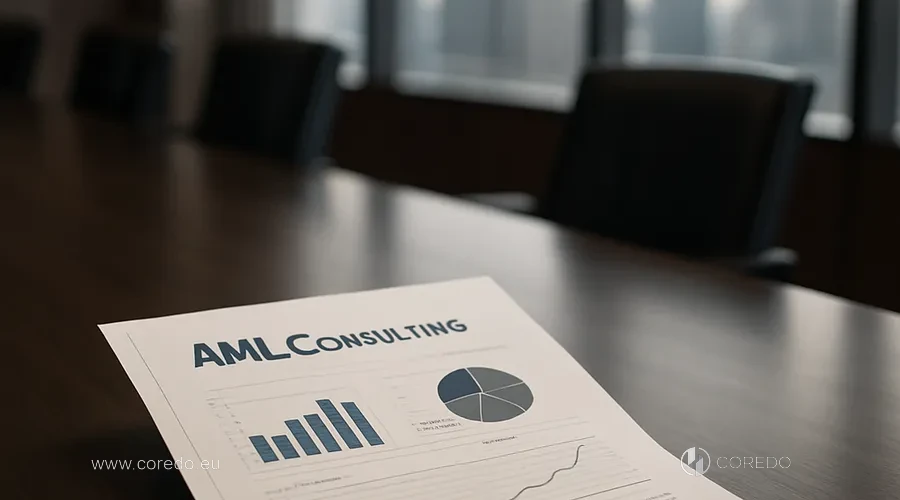







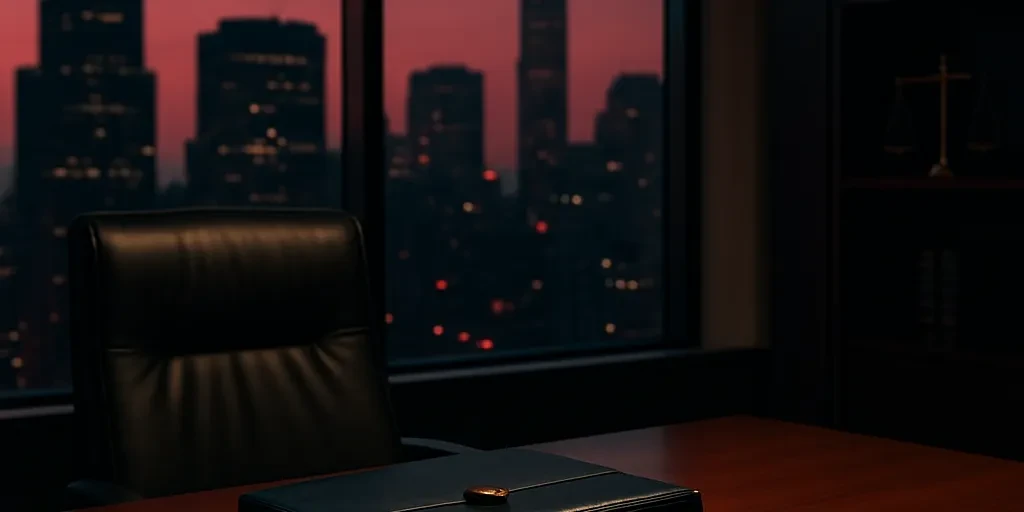

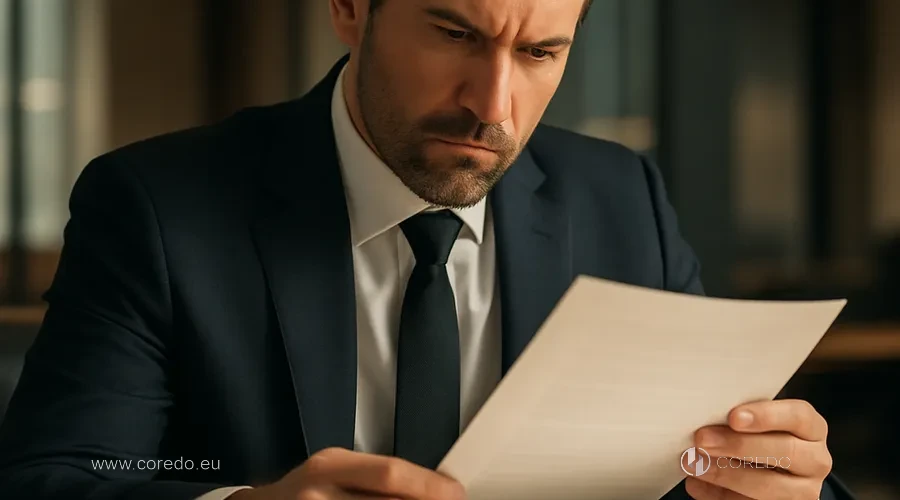


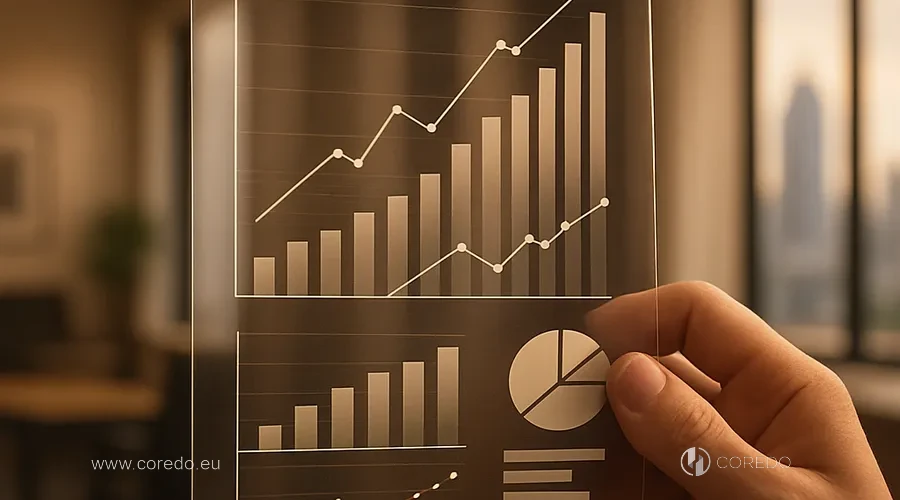







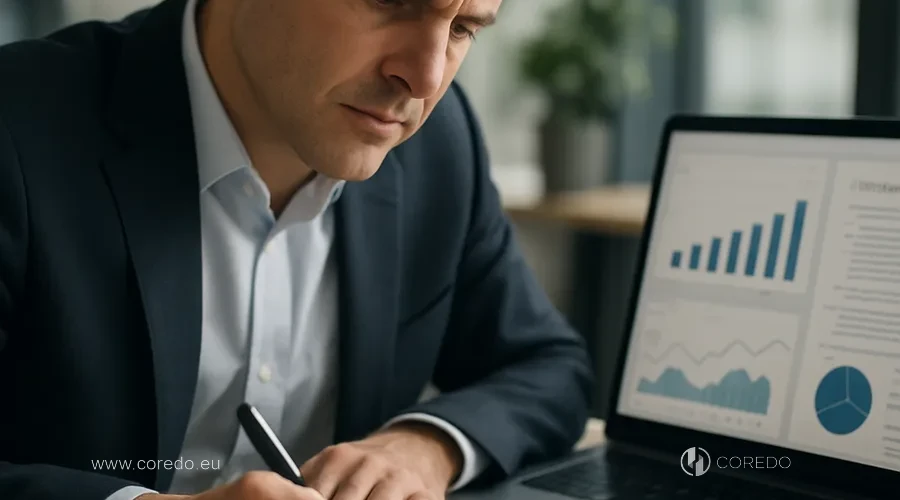





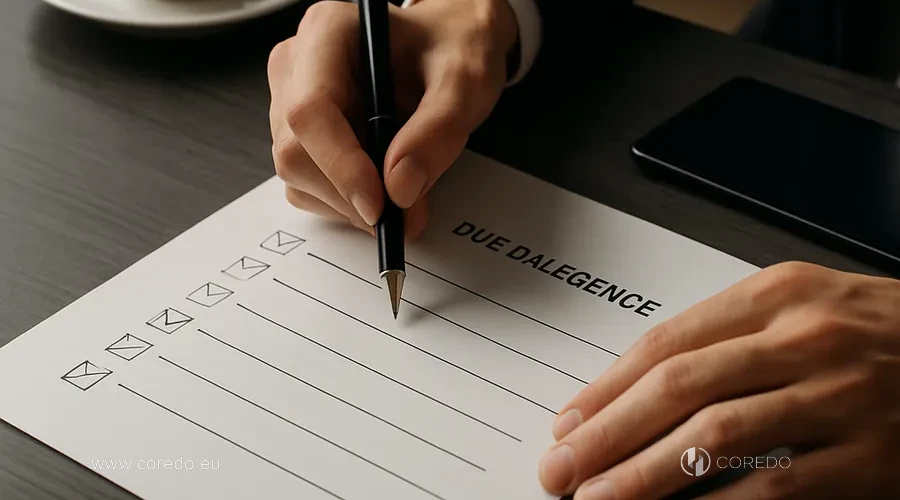











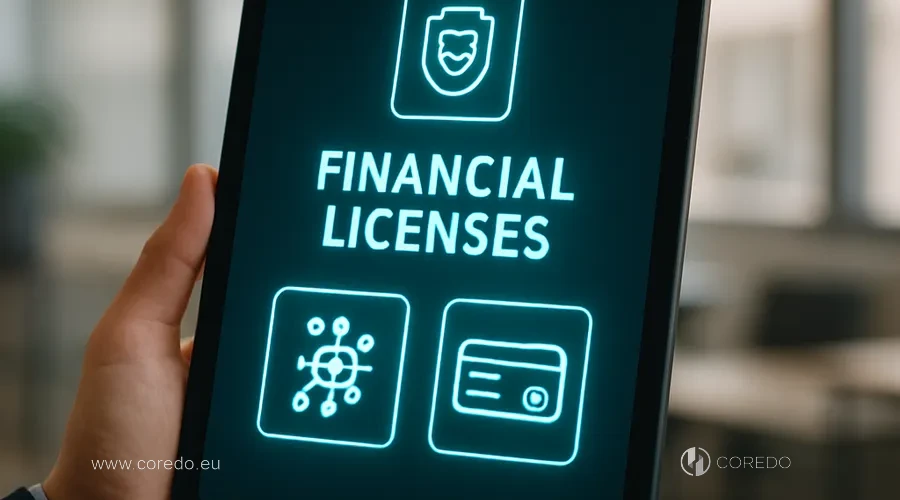
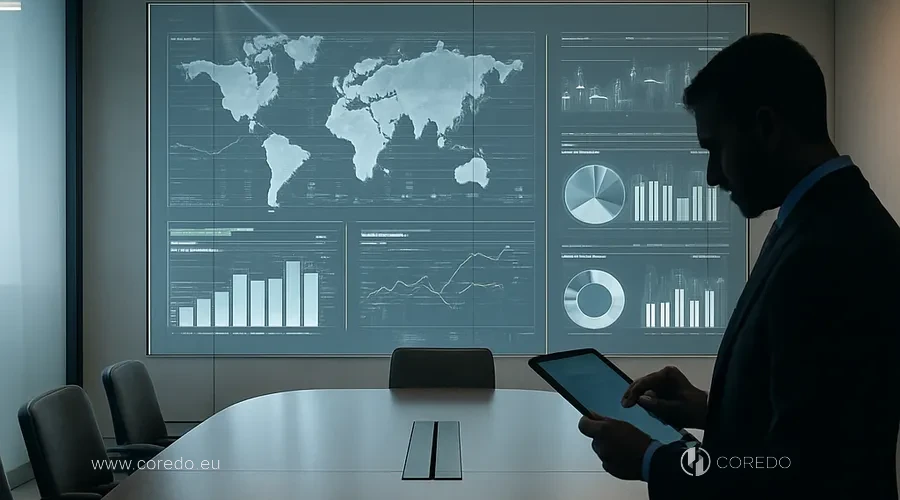




 Minimum set that increases trust:
Minimum set that increases trust:




